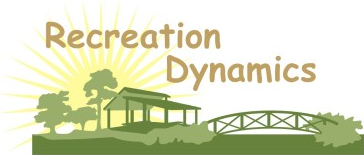
The 10 Playground Safety Questions Everyone Should Ask
1. Is the Playground Surface Safe? Falling is the number one cause of injuries on the playground. A child who falls on a hard surface such as concrete or even grass can be seriously injured or even killed. The material underneath and around all playground equipment should be resilient.
Examples of resilient playground surfacing are: Rubber Tiles, Poured-in-Place Materials, or ADA Wood Fiber.
2. Is There Enough Room Underneath and Around Playground Equipment? The general rule is to allow a minimum use zone of six feet around playground equipment. Refer to the ASTM F1487-98 Standard or the Consumer Product Safety Commission guidelines for specific zone use requirements.
3. Is There Adequate Space Between the Playground Equipment? The two use zones of two stationary pieces of playground equipment that are positioned adjacent to one another may overlap if the adjacent designated play surfaces of each structure are no more than 30 inches above the protective surface (i.e., they may be located a minimum distance of 6 feet apart). If adjacent designated play surfaces on either structure exceed a height of 30 inches, the minimum distance between the structures should be 9 feet.
4. Is the Playground Appropriate for the Child? Playgrounds should have play activities designed for children with varying ages and abilities.
5. Does the Equipment Put Children At Risk From Protruding Objects? There should be no sharp points, corners, or edges on any components of playground equipment that could cut or puncture the skin of a child.Frequent inspections are important to prevent injuries caused by sharp points, corners, or edges that could develop as a result of wear and tear on the equipment.
See the CPSC Handbook for Playground Safety, Section 9.1-9.4.
6. Does the Playground Equipment Present a Strangulation Risk? There should be nothing present that could snag clothing, jewelry, or strings.
7. Are There Any Moving Parts that Could Pinch a Child? There should be no accessible pinch, crush, or shearing points on playground equipment that could injure a child or catch their clothing. Such points can be caused by components moving relative to each other or to a fixed component when the equipment moves through its anticipated cycle.
To determine if there is a possible pinch, crush, or shear point consider the likelihood of entrapping a body part and the configuration and closing force of components.
For information on pinch, crush, and shear points for specific pieces of equipment, please see Section 9 of the CPSC Handbook for Public Playground Safety.
8. Is There Anything that Might Cause a Child to Trip? Surfaces should be smooth and level, with no tree stumps or roots.
9. Is the Playground Well Maintained? Inadequate maintenance of equipment can result in injuries on the playground. Because the safety of playground equipment and its suitability for use depend on good inspection and maintenance, the manufacturer's maintenance instructions and recommended inspection schedules should be strictly followed.
A comprehensive maintenance program should be developed for each playground. All equipment should be inspected frequently for any potential hazards and for corrosion or deterioration from rot, insects, or weathering. The playground area should also be checked frequently for broken glass or other dangerous debris. Loose-fill surfacing materials should be inspected to insure that they have not become displaced or compacted in high traffic areas, such as under swings and at slide exits. Any damage or hazards detected during inspections should be repaired immediately in accordance with the manufacturer's instructions for repair and replacement of parts.
Records of all maintenance inspections and repairs should be retained, including the manufacturer's maintenance instructions and any checklists that are used during the inspection. When the inspection is performed, the person performing it should sign and date whatever form is used, and a record of any accident and injury reported to have occurred on the playground should also be retained. This will help to identify potential hazards or dangerous design features that should be corrected.
For a suggested general maintenance checklist, please refer to Appendix A of the CPSC Handbook for Public Playground Safety.
10. Has the Playground been Renovated Since 1993? Outdated playground equipment can be extremely dangerous. For example, during the 60's, 70's, and 80's, heavy metal animal swings were common on playgrounds. This equipment can act as a lethal battering ram, potentially injuring children who walk in front of them.
To request a copy of the Consumer Products Safety Commission's Handbook for Public Playground Safety, click here
Copyright ©2002–2024 Recreation Dynamics, Inc. (540) 547-9402
